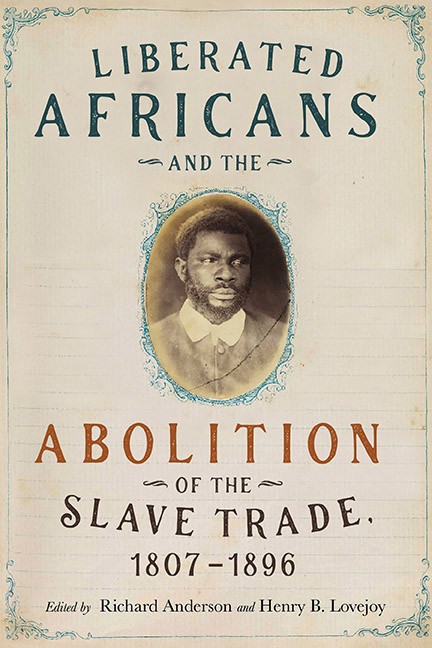Book contents
- Frontmatter
- Dedication
- Contents
- List of Illustrations
- Acknowledgments
- Introduction: “Liberated Africans” and Early International Courts of Humanitarian Effort
- Part One Origins of Liberated Africans
- Part Two Sierra Leone
- Part Three Caribbean
- Part Four Lusophone Atlantic
- Part Five Liberated Africans in Global Perspective
- Part Six Resettlements
- Bibliography
- Notes on Contributors
- Index
7 - The Misfortune of Liberated Africans in Colonial Cuba, 1824–76
Published online by Cambridge University Press: 21 March 2020
- Frontmatter
- Dedication
- Contents
- List of Illustrations
- Acknowledgments
- Introduction: “Liberated Africans” and Early International Courts of Humanitarian Effort
- Part One Origins of Liberated Africans
- Part Two Sierra Leone
- Part Three Caribbean
- Part Four Lusophone Atlantic
- Part Five Liberated Africans in Global Perspective
- Part Six Resettlements
- Bibliography
- Notes on Contributors
- Index
Summary
A year after the British act to abolish the slave trade in 1807, Napoleon Bonaparte invaded Spain, which led to a constitutional crisis, which in turn fueled the Spanish American wars of independence. In the midst of this international conflict, on 23 September 1817 Spain signed an anti-slavetrade treaty with Britain, receiving in compensation £400,000. Even though authorities in Cuba and Puerto Rico had little interest in abolishing slavery, the treaty prohibited all Spanish subjects from engaging in the slave trade along the African coast starting in May 1820, but only north of the equator. The 1817 treaty authorized British and Spanish officials the mutual right to search any vessel suspected of carrying slaves. To determine the legality of the capture of slave ships, Anglo-Spanish bilateral courts of mixed commission were established on both sides of the Atlantic after the signing of the treaty. While trials began almost immediately after the foundation of the court in Freetown, cases in Havana began seven years after the treaty in 1824. The Cuban court remained in operation until 1876, shutting its doors about a decade after the last known slave ship reached the island in 1867.
In the event of a guilty verdict of illegal slave trading, the enslaved onboard were to receive a certificate of emancipation and be handed over to the government on whose territory the ruling commission stood. Once declared free, these people were “employed” as free servants and laborers under apprenticeships, which often amounted to nothing more than indentured servitude. The royal decree of 19 December 1817, signed by King Fernando VII, mandated that all Africans acquired on the coast of Africa should be declared free at the first Spanish point of call of the vessel transporting them to the Americas. The international treaty of 1817 and the Spanish internal law put an end to the legal slave trade and resulted in the creation of a new social status of legally free individuals called negros emancipados in the Spanish Caribbean.
Despite these bilateral efforts to suppress the Atlantic slave trade to Cuba, over a half-million enslaved Africans arrived into the island as this court adjudicated on cases of illegal slave trading. Between 1824 and 1876, over twentyseven thousand slaves were recaptured and emancipated in Cuba (see tables 7.1 and 7.2).
- Type
- Chapter
- Information
- Publisher: Boydell & BrewerPrint publication year: 2020



